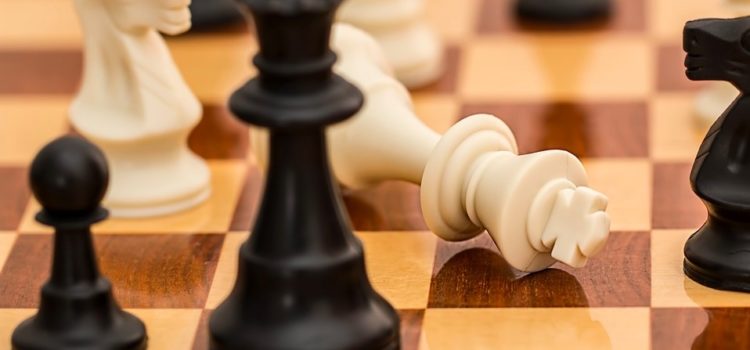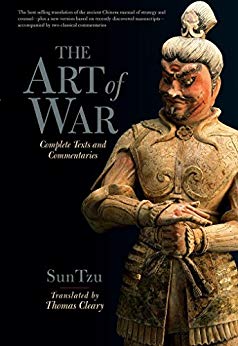

This article is an excerpt from the Shortform summary of "The Art of War" by Sun Tzu. Shortform has the world's best summaries of books you should be reading.
Like this article? Sign up for a free trial here .
In The Art of War, Sun Tzu advises to “subdue the enemy without fighting.” What does Tzu mean by this? How can you avoid fighting in battle?
We’ll cover how to subdue the enemy without fighting and the art of the easy victory.
Strike Preemptively: Subdue the Enemy Without Fighting
Sun Tzu says, “The supreme art of war is to subdue the enemy without fighting.” He also says, “Supreme excellence consists of breaking the enemy’s resistance without fighting.” How can you keep from going to battle?
The best time to strike an enemy is when they are involved in preparations. Strike before the enemy is fully mobilized, and they will be unable to fight back. This may prevent a battle. This strategy involves using intelligence, rather than brawn, to win. This is how to subdue the enemy without fighting.
If intelligent strategies don’t work, the next strategy is to win through intimidation.
- Form alliances to increase your strength to a point where fighting would be ill-advised for your opponent.
- Form alliances with the enemy’s allies to disrupt the enemy’s power.
Ultimate victory is when battle has been thwarted through intelligence or intimidation, there has been no destruction, no cities have been seized, and no blood has been shed. These are the ways to subdue the enemy without fighting. This is the supreme art of war.
Historical Example: Subduing the Enemy Without Fighting
During the Spring and Autumn Era (722 to 481 B.C.E.), when the Zhou dynasty was beginning to collapse, the state of Jin wanted to overtake the state of Qi, a much smaller state. The Jin sent an emissary to scope out the Qi. The emissary, feigning drunk aggression, insulted the Qi’s ruler and tried to force the Qi to disregard etiquette. When the Qi did not react to the insult and did not abide the aggressive demand, the emissary returned home and told the Jin leadership that the Qi were alert, cautious, and prepared. Therefore, they should not be attacked at this time. The Qi were able to thwart armed battle through intelligence.
Supreme Art of War: The Easy Victory
A victorious leader wins first and battles second. Therefore, a good leader takes advantage of opportunity, wherein they succeed when winning is easy. An easy victory means understanding the nuances of your opponent in order to preemptively strike. It is important to assess the situation to subdue the enemy without fighting.
- Stand on advantageous ground by taking into consideration all circumstances that create vulnerability in your opponent.
- Another way of thinking about advantageous ground is creating a strategy that is so inscrutable and adaptable that defeating you becomes close to impossible.
- You have a contingency for everything, making you always prepared.
- You know your opponents so well as to be able to recognize even the slightest weakness and exploit it.
The Rules for Approaching Enemy Forces
Sometimes, you can’t subdue the enemy without fighting. If all traits are equal between you and your enemy, there are rules for how to proceed.
1. If you have ten times the troops, you should surround the enemy.
- A large differential is needed if you are to enclose them without gaps in the formation.
2. If your numbers are not large enough to attack, such as only five times larger than those of the enemy, divide your troops into groups.
- Use several groups to broach an attack, and keep a few back to bar against surprise attacks and exploit any enemy weaknesses you observe as the attack progresses.
3. If you are only slightly larger, such as a two-to-one ratio, divide your troops into two groups.
- Use one group to draw out the opponent, and use the other to attack them unexpectedly.
4. If you are equal in size and ability, deploy strategies to avoid direct combat.
- Use strategies of division to disrupt the enemy’s power, then engage in ambushes and surprise attacks.
- If this strategy is not possible, go on the defensive and stand your ground.
- Don’t get pulled into battle if you are not sure of victory.
5. If you are smaller or weaker, avoid conflict and flee.
- Again, engaging in battle without the assurance of victory is a foolish strategy.
- After retreating, build up your defenses and see to the nourishment of the troops.
- Wait for a gap in the enemy’s strategy or for the enemy to relax, then strike.
Even if you can’t subdue the enemy without fighting, you may find that, by following this advice, you achieve victory with minimal fighting.
———End of Preview———

Like what you just read? Read the rest of the world's best summary of "The Art of War" at Shortform . Learn the book's critical concepts in 20 minutes or less .
Here's what you'll find in our full The Art of War summary :
- How to mislead your enemies to win the war
- Classic examples from Chinese history to illustrate Sun Tzu's strategies
- How to use spies to gather information and defeat your opponents







I find this article very educating and interesting at the same time. Keep it up!
What’s real power of the pastor
Thank you so much for your fine work, I used these strategies for Spiritual Warfare and found it to be extremely effective. You are a force for good in this troubled world, God Bless You and Your Family 🙏✝️🕊️🌍☮️